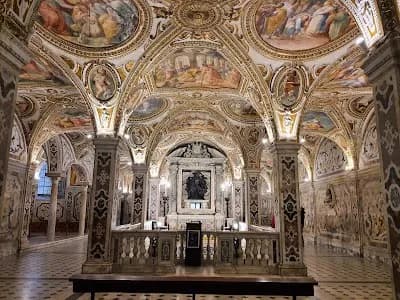
St. Matthew
Apostle, Evangelist, and Witness to Christ
“Judge not, that you be not judged." - Matthew 7:1-5
Saint Facts
- Origin:
- Israel
- Gender:
- Male
- Vocation:
- Unknown
- Birth:
- Unknown
- Feast Day:
- Sep 21
- Death:
- Unknown
Saint Details
St. Matthew, also known as Levi, was one of the twelve apostles of Jesus Christ and the author of the first Gospel in the New Testament. He was born in the 1st century in Galilee, Israel, and worked as a tax collector before his calling by Jesus. Tax collectors were often despised in Jewish society for collaborating with the Roman occupiers and for their reputation for corruption. Despite this, Jesus saw beyond Matthew"s profession and called him with the simple words, "Follow me" (Matthew 9:9). Matthew immediately left his post and became a devoted disciple. Matthew"s Gospel is unique in its emphasis on Jesus as the fulfillment of Old Testament prophecies, making it particularly valuable for Jewish converts to Christianity. He is believed to have preached the Gospel in Judea and possibly in Ethiopia and Persia, though details of his later life and death remain uncertain. Tradition holds that he died as a martyr, but the exact circumstances and location of his death are unknown.
Associated Holy Sites

Basilica di Santa Croce in Gerusalemme
Piazza di S. Croce in Gerusalemme, 10, 00185 Roma RM, Italy

St Matthew Catholic Church
1 Notre Dame Ave, San Mateo, CA 94402, USA

Cattedrale di Santa Maria degli Angeli, San Matteo e San Gregorio VII
Piazza Alfano I, 84125 Salerno SA, Italy
Details for: Basilica di Santa Croce in Gerusalemme
The Basilica di Santa Croce in Gerusalemme, located in Rome, is one of the city’s most significant pilgrimage sites. Built in the 4th century, it houses relics believed to be connected to the Passion of Christ, including fragments of the True Cross, thorns from the Crown of Thorns, and a nail used in the Crucifixion. These relics were brought to Rome by Saint Helena, the mother of Emperor Constantine, who is credited with discovering them during her pilgrimage to the Holy Land. The basilica’s name, meaning Holy Cross in Jerusalem, reflects its connection to these sacred artifacts. Pilgrims visit the basilica to venerate these relics and to reflect on the suffering and sacrifice of Jesus. The church’s architecture and art, including its medieval mosaics and Renaissance frescoes, further enhance its spiritual atmosphere. For centuries, it has been a place of deep devotion and prayer, drawing believers from around the world seeking a tangible connection to the events of Christ’s Passion.
🙏 No spam. Just grace. Unsubscribe anytime.